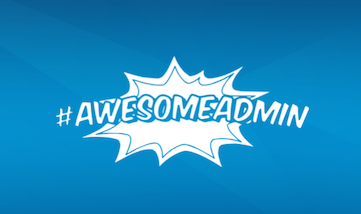So, you’ve inherited an undocumented org…now what? You’ve started a new job. (Congrats!) You’re volunteering for a non-profit. (Go you!) You’re a consultant who’s just started working with a new client. (It begins!) You ask your new boss/supervisor/manager for the documentation of the Salesforce org and you get a blank stare and a shrug. Oh […]
9 Things Your Consultant Won’t Say To Your Face
I recently read a very interesting article about the behind-the-scenes truths in sales and it inspired me think about the truths of consulting. Having worked on a few consulting projects, I reached out to the Cloud for Good team who has worked on hundreds of implementation projects and here is what they came up with:
1. We cannot prescribe before we diagnose, that would be malpractice.
The world of Salesforce (or any other CRMs) is a world with amazing capabilities out of the box and almost endless possibilities with additional customization. Since we believe that your own processes and needs are unique, we need to understand what you do, how you currently do it, and how you want to do it before we design a solution. Even if you think you know what you want to do and how to do it, you might not know the best way to do it with Salesforce. The process of discovery is a mutual process. We discover what you do and you discover what can be done with the platform.
2. Don’t fall in love with your requirements.
Documenting your own processes and creating a list of requirements before finding a consultant is a great thing to do. It will help save time and guide us in the right direction. Just don’t fall in love with the document. Use the requirements as a platform to start a conversation with your consultant and be open to making changes.
3. Use our time wisely.
You should not hire a consulting firm to create a new field or a workflow in your system. Almost anyone can do that with minimal training. Our value as a consultants is in translating your needs into technology and in architecting a solution that would meet and grow with your mission.
4. It is OK to doubt us.
We pride ourselves in being Salesforce experts who speak fluent nonprofit and we have also seen hundreds of other organizations who have implemented very similar processes. With that being said, it is ok for you to ask us questions and doubt our decisions. We believe that the more involved you get in the process the more successful the implementation will be.
5. Beware of your data.
We can migrate your data to the new system but we have no control over your current data quality. Salesforce’s powerful reports might reveal issues with your data that you were not able to identify before, but that doesn’t mean we created those issues. We just made them visible. In other words, don’t shoot the messenger!
Your data is your most valuable asset–don’t underestimate the value and the difficulty of migrating your data. The migration might be the most painful part of your implementation and possibly the most involved one. Good, clean data in your new system can do magic for your implementation’s success.
6. Integration is never just “plug and play”.
While Salesforce is open and designed to integrate with other applications via the API, it is a misconception that an integration will simply work on a plug and play basis. Whether you are using middleware or building a custom integration you need to have a clear strategy for both your internal business processes in Salesforce and the integrated application. Integration is much more than mapping fields and objects.
7. We cannot control everything.
We can’t control the Salesforce feature roadmap or the response time you get from an application provider. We also don’t have super powers to control the flow of time. If you are delayed in making a decision it might delay your project’s go-live date.
8. Technology cannot fix broken processes.
From my experience, implementing a CRM is often the first time organizations stop to evaluate their processes. Your processes should be clearly defined before the architecture of the new system begins because Salesforce can only reflect that which exists at the time it is implemented. Implementing a fundraising application on Salesforce won’t suddenly impact your ability to raise more funds or installing a volunteer management application won’t give you the strategy to manage them. Change isn’t always easy or, said differently, the technology is the easy part, the people and process may be more difficult.
9. Salesforce for nonprofits is free like “free puppies”.
If you adopt a puppy, do you expect that it will housebreak, train and care for itself? Salesforce is a growing and evolving system and as such it requires maintenance and constant training. Don’t stop caring for it or training your staff when the implementation is over. Just like your mission, your database should evolve as your organization does. As a cloud-based system, Salesforce can do that for you so you no longer need to feel constrained by decisions you made in the past, but you have to invest in it.
Ready to start your journey? Find a partner you can trust who can help you translate your requirements into technology.



